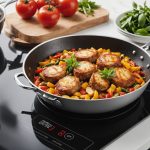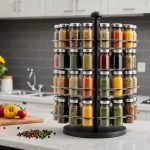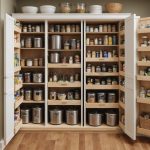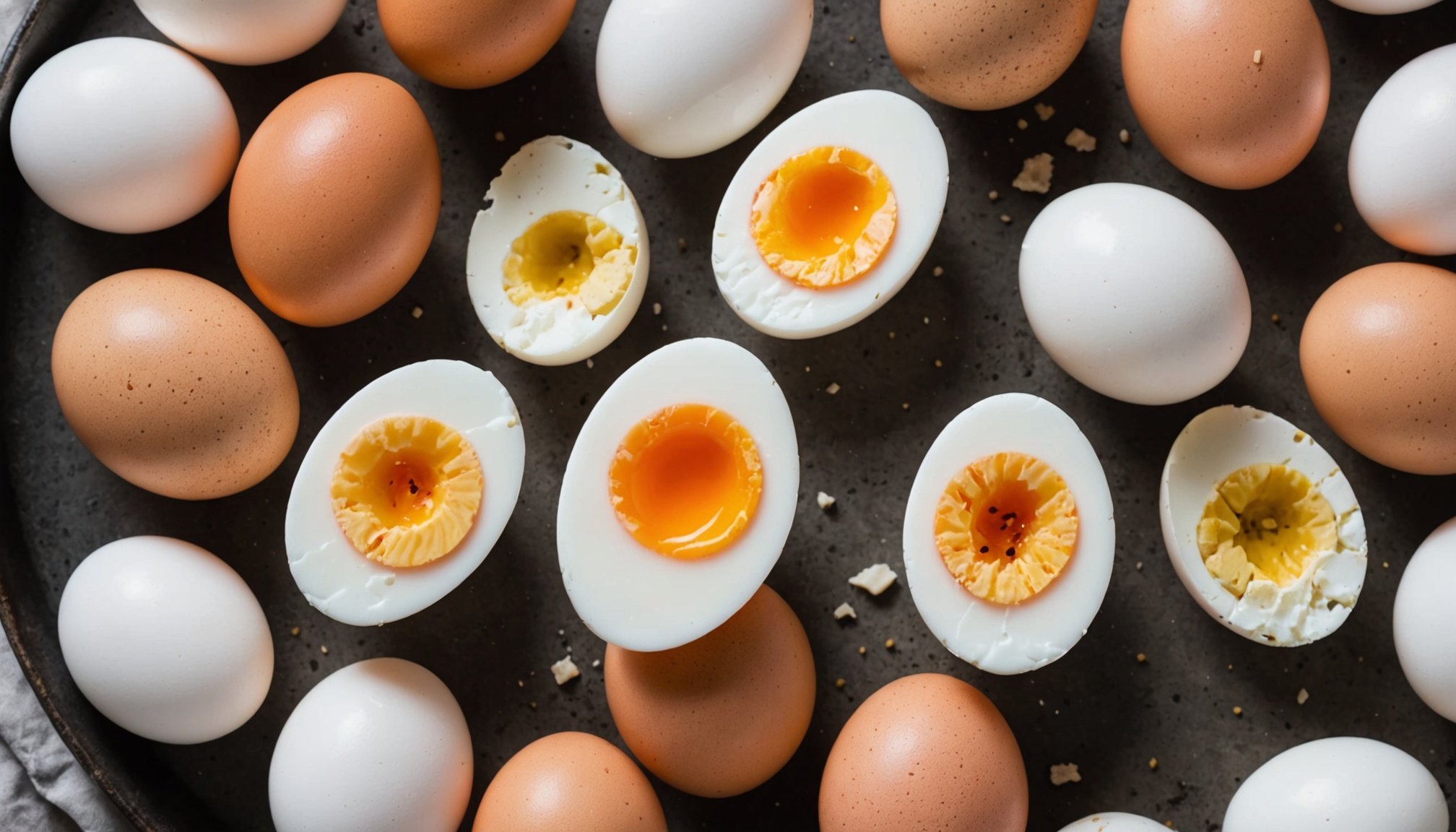Understanding Soft-Boiled Eggs
Delving into the world of soft-boiled eggs unveils a delightful fusion of silky whites and luscious yolks. The hallmark of the perfect soft-boiled egg lies in achieving the desired egg consistency, where the yolk remains runny and the whites are fully set. Achieving this takes precise cooking techniques.
The journey to this culinary delight begins with mastering the ideal cooking times and temperatures. For a perfectly gooey yolk, heat water to a gentle simmer and immerse the eggs for about 5 to 7 minutes, depending on your preference. While some may prefer slightly firmer yolks, adjusting the timer to 8 or 9 minutes can cater to those tastes.
Also read : Revolutionize your kitchen: enhance space and efficiency with creative revolving spice racks
Beyond breakfast tables, soft-boiled eggs add a touch of sophistication to various dishes. They elevate salads, giving them a creamy texture, or crown a bowl of ramen with their rich, velvety presence. Such versatility highlights their importance in culinary exploration.
Understanding the nuances of soft-boiled eggs not only involves time management but also learning the art of combining heat with patience. This balance transforms simple ingredients into a delightful experience that emphasizes both texture and flavour.
Have you seen this : Revolutionize your kitchen: enhance space and efficiency with creative revolving spice racks
Types of Egg Timers
Navigating the world of egg timers reveals a variety of options, each offering unique benefits. Mechanical timers rely on a spring-driven mechanism, providing a classic experience with audible alerts when time’s up. Often favoured for their simplicity, they don’t require batteries or power.
Conversely, digital egg timers boast precision and versatility. They present clear countdowns on LED screens, assisting in managing multiple timings simultaneously. Ideal for multitaskers, these gadgets often include additional features like alarms for specific intervals.
In recent years, visual timers have gained popularity. These timers change colour to indicate the remaining time, providing an easy-to-read, non-audible option ideal for quiet kitchens. On the other hand, sound timers use alarms to notify users, which can be beneficial for those who need a loud reminder.
The introduction of app-based timers and smart technology adds another layer of accuracy. These allow users to control timing remotely via smartphones, ensuring precision and customisation. In choosing among these types of timers, consider your needs for accuracy, personal preference for sound or visual cues, and the level of technological integration desired.
How to Choose the Right Egg Timer
Selecting egg timers involves evaluating features that align with your cooking needs. To ensure accuracy and ease of use, consider timers that offer clear functionality and intuitive controls. Smaller kitchen gadgets may be more portable, accommodating busy environments, while durability and material quality become pivotal for long-term use.
Features to Consider
Accuracy is critical, particularly when striving for precise egg boiling results. Look for timers with easy-to-read displays and audible alerts, aiding in effective time management. Assessing size and portability matters: a compact design can seamlessly integrate into various kitchen layouts. The durability of a timer depends on its material; choosing robust materials ensures continual usage without frequent replacements.
Recommended Egg Timers
When exploring options, reviews of popular egg timer models can guide purchasing decisions. Established brands often provide reliability, and examining the price range helps identify value-for-money features. User feedback offers insights into real-world application, making it invaluable for first-time buyers seeking feedback from cooking enthusiasts.
Where to Buy Quality Egg Timers
For purchasing, compare prices between online platforms and local retailers for kitchen gadgets. Each has its perks: online shopping offers convenience, while exploring local stores might lead to special promotions or personal advice from experienced staff.
Steps to Cooking a Perfect Soft-Boiled Egg
To create the perfect soft-boiled egg, certain cooking methods must be meticulously followed. Firstly, gather the essential tools: a saucepan, slotted spoon, and a timer. The ingredients are simple: fresh eggs and water.
Begin by filling the saucepan with enough water to fully submerge the eggs, then bring it to a gentle boil. Using a slotted spoon, carefully lower the eggs into the boiling water. For those aiming for a deeply runny yolk, set your timer for precisely 5 to 6 minutes. This timing is crucial for the ideal egg boiling process.
Once the eggs reach the desired consistency, promptly transfer them to a bowl of ice water to halt cooking. This step not only preserves the egg’s consistency but also simplifies peeling. Allow the eggs to cool for a minute or two.
To peel, gently tap the egg’s shell on a hard surface and roll it to crack all over. Carefully remove the shell, revealing the soft-boiled egg inside. These steps are designed to achieve consistently satisfying results, regardless of your kitchen’s setup or equipment.
Troubleshooting Common Cooking Issues
Achieving the perfect soft-boiled egg can sometimes lead to challenges in the kitchen. Familiarising oneself with common cooking problems helps in crafting the ideal outcome each time. A frequent issue is overcooking, often resulting in a firmer yolk than desired. If this occurs, slightly reduce the cooking time on your next attempt for softer egg consistency.
Conversely, undercooking might leave the whites too runny. This can be addressed by extending the boiling time by 30 seconds to a minute incrementally, ensuring that the whites are fully set.
Another widespread challenge is the difficulty in peeling, which can affect both the presentation and ease of eating. To mitigate this, plunge the eggs into ice water immediately after boiling. This sharp temperature change shocks the shell, making it easier to remove.
For consistent results, regardless of the kitchen equipment, maintain a steady simmer and employ a reliable egg timer. If variations persist, consider adjusting the water level or egg position in the pot. Each of these modifications offers solutions to refining your cooking techniques.











